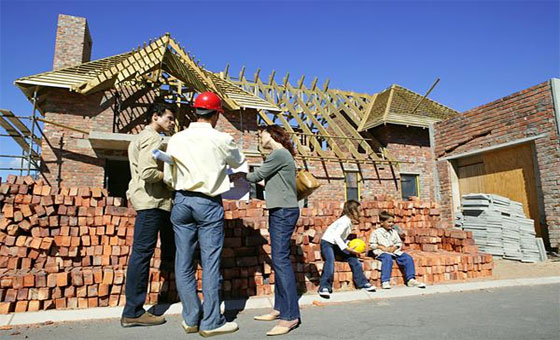Estimating home building per square foot
Estimating the cost of building an innovative home helps plan for the features you want, while staying within your basic budget. American home-building calculations exclude the property price, planters, driveway, sidewalks and landscaping around the possessions.
The estimate also excludes pre-construction work such as lot grading and connecting utilities. Lee Grayson of Demand Media has written this article. We are presenting the excerpt. Lee Grayson has worked as a freelance writer since 2000. Her articles have appeared in publications for Oxford and Harvard University presses and research publishers, including Facts-On File and ABC-CLIO. Grayson holds certificates from the University of California campuses at Irvine and San Diego.
First Step: a. Calculate the total square footage of living space using the building blueprints. b. Add the square feet for all interior rooms under the main roof. c. Include the attic or porches only when used as four-season rooms. Do not include the footage for the garage area or patios.
Second Step: a. Determine the finishing class and construction quality for your new home. b. The highest-quality construction uses exterior masonry, shake, tile or architectural-grade shingles, reinforced concrete foundation with a basement or crawl space, and irregular walls and decorative openings. c. The mid-range class has a concrete or block foundation, some wall-height changes and architectural asphalt shingle roofing. d. Standard construction features basic asphalt roof shingles, concrete slab and square interior and exterior walls.
Third Step: a. Determine the grade for your bathroom finishing and construction materials using your materials list. b. High-quality construction has a minimum of four plumbing fixtures in each bath, electricity for eight or more built-in appliances and wiring for more than 80 light fixtures in the home. c. Mid-grade construction features three plumbing fixtures per bath, six built-in appliances and recessed lighting.
Fourth Step: a. Calculate the quality of your windows and doors from your materials list. b. The highest-class construction has large multi-pane glass windows, skylights or decorative windows and four or more exterior doors. c. Mid-grade construction features a decorative front door, quality exterior doors and at least one large window with multi-pane glass. d. Standard construction has hardboard doors and vinyl windows.
Fifth Step: a. Review the basic features of the home to determine the construction class. b. Homes with specialized heating and cooling features, such as solar or geothermal systems, and masonry fireplaces qualify as higher-quality construction. c. Mid-grade construction has one prefabricated fireplace and a high-efficiency heating and cooling system. Standard grade includes only a basic heating system.
Sixth Step: a. Determine the features of your kitchen from your building materials list. The highest-class construction uses custom cabinets, high-end appliances featuring built-in ovens, and finishes using granite or tiles. b. Mid-grade construction has high-grade commercial cabinets, quality laminate counters and a freestanding stove. c. Standard-grade kitchens have contractor-grade cabinets and lower-quality laminate, with the homeowner supplying the appliances.
Seven Step: a. Review the rankings of high, mid or standard construction from the categories in steps 2 through 6, and multiply the total square footage by the construction quality that you've selected for the majority of the categories. b. For example, homes built with the majority of the features listed under the highest class of construction in 2012 used $110 as the multiplying factor. c. Mid-grade construction used the average square-foot cost of $95. Houses with standard features used $79 as a multiplier. d. Multiply the cost by the number of square feet from your blueprint calculations to estimate your building costs.
Eighth Step: a. Test your cost estimate by using neighboring new construction. b. Subtract the average cost of the land from the price of the comparison home, typically approximately 20 percent, and then divide the price of the new home by the square footage. c. Compare your calculations with the new, similar neighborhood construction to give you an average building cost-per-square-foot figure.

Ref: www.budgeting.thenest.com
|